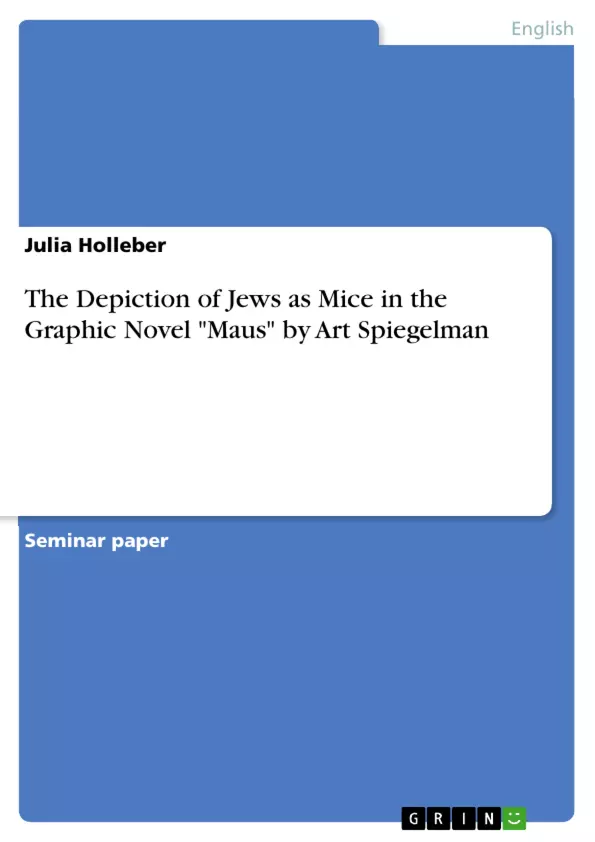This paper will concentrate on the function of the portrayal of Jews as mice in the graphic novel "Maus" by Art Spiegelman as they represent the main characters and, thus, form the focus of the novel. The author proposes that with the depiction of Jews as mice, Spiegelman provides the reader with a more direct way to the material. Moreover, by creating a paradox, he disapproves Hitler’s statement, which is printed in the epigraph of the novel, that "Jews are undoubtedly a race, but they are not human" and by using masks to modify the character’s identity Spiegelman criticizes the Nazi’s racial logic that specific populations have an unchanging character
The graphic novel "Maus" by Art Spiegelman has been one of the most popular and deeply discussed comics of the last decades. Being the first graphic novel about the Holocaust, it arose much attention but was also often criticized of not dealing with the topic with enough respect.
Table of Contents
- Introduction
- Analysis of the function of the depiction of Jews as mice in Maus
- Direct way to the material
- Reversal of the Nazi image of the Jews
- The fluidity of character
- Conclusion
Objectives and Key Themes
This paper aims to analyze the function of the portrayal of Jews as mice in Art Spiegelman's graphic novel "Maus." It investigates how this depiction contributes to the reader's understanding and engagement with the Holocaust, particularly within the context of Nazi ideology. The focus is on the first part of the novel, "My Father Bleeds History," highlighting how the animal representation creates a unique perspective on the historical events.
- The use of animal characters as a means of making the Holocaust more accessible to readers.
- The creation of a paradox that challenges Hitler's view of Jews as non-human.
- The exploration of the fluidity of character and the critique of Nazi racial logic.
- The impact of the depiction on the reader's emotional connection to the story.
- The use of animal imagery to defamiliarize the Holocaust and create a fresh perspective.
Chapter Summaries
The introduction establishes the context of "Maus" as a significant graphic novel dealing with the Holocaust. It highlights the controversy surrounding the use of animal imagery and introduces the paper's focus on the depiction of Jews as mice.
The second chapter delves into the function of the depiction of Jews as mice. It explores the symbolism associated with mice, linking them to the image of the underdog and the Nazi ideology that labeled Jews as vermin. The portrayal of Germans as cats and Poles as pigs is also examined, highlighting the contrasting relationships between these groups.
Keywords
The key terms and concepts explored in this paper include: graphic novel, Holocaust, animal imagery, Nazi ideology, Jews, mice, cats, Poles, pigs, reader engagement, emotional connection, defamiliarization, accessibility, historical perspective, fluidity of character, racial logic.
- Arbeit zitieren
- Julia Holleber (Autor:in), 2018, The Depiction of Jews as Mice in the Graphic Novel "Maus" by Art Spiegelman, München, GRIN Verlag, https://www.grin.com/document/889176



